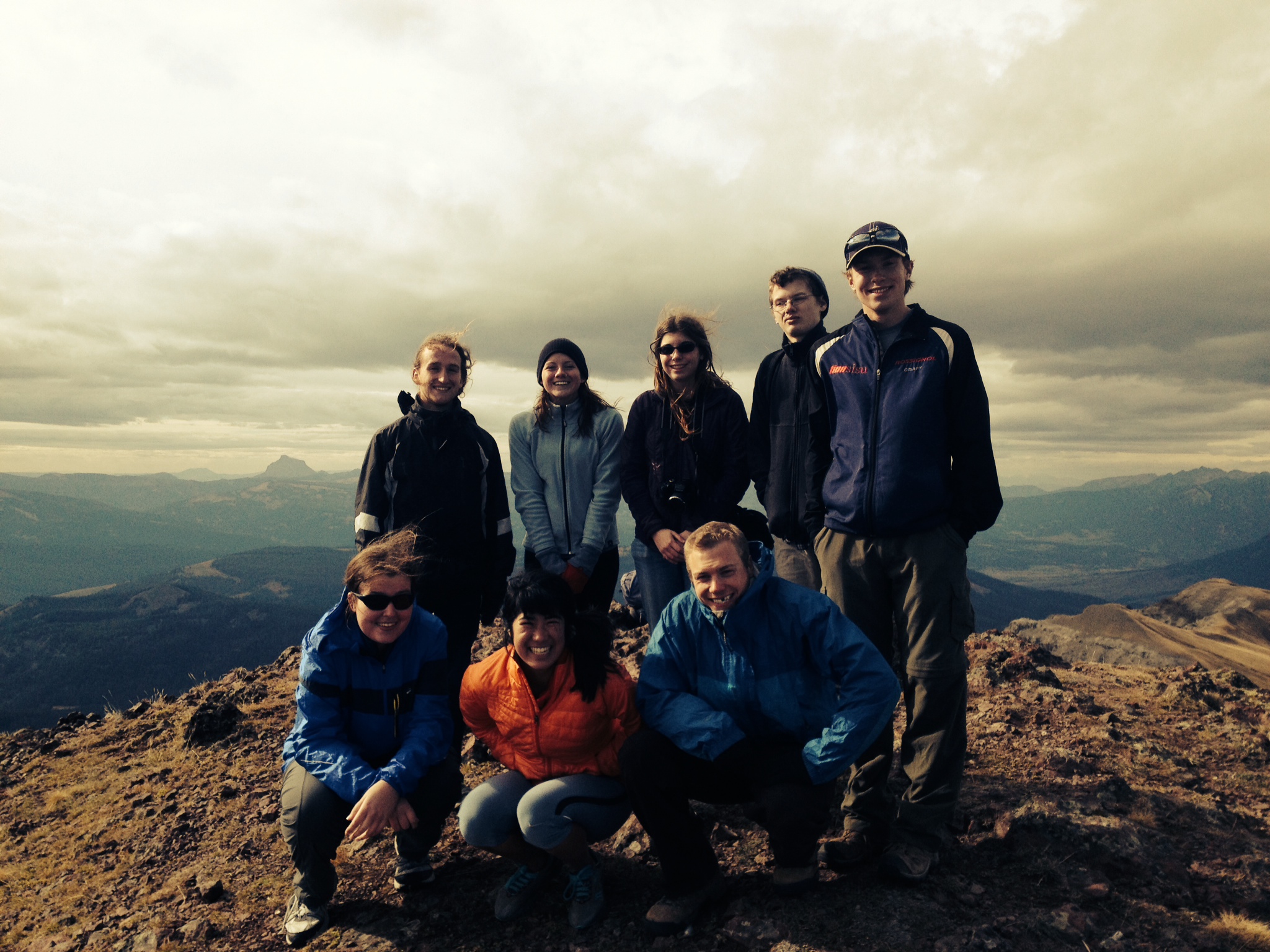Despite being exhausted and hungry, we arrived at our camp in high spirits. The intoxicating feeling of adventuring in the backcountry poured through us as we pitched our tents and started a fire. Night was quickly upon us, followed by light snow flakes that blanketed the fields and trees.
 This past weekend, the Sierra Club's Our Wild America campaign partnered with the Wilderness Club at Montana State University to backpack into Ramshorn Lake in the Gallatin Range. After a steep summit to Ramshorn Peak, we hiked along the ridge, marveling at the spectacular views and diverse geology. We found petrified wood and a fossilized feather, many burs that stuck to our pants and mud that caked our boots, and drainages and rock screes. We passed a trio of hunters packing out a mountain goat, finding the leftover guts along the way. Birds soared overhead, and we knew other wildlife was likely nearby. We saw herds of mountain goats; their balance and grace amazing us as they moved around the steep unstable mountainside. We, on the other hand, stumbled around, slipping and sliding.
This past weekend, the Sierra Club's Our Wild America campaign partnered with the Wilderness Club at Montana State University to backpack into Ramshorn Lake in the Gallatin Range. After a steep summit to Ramshorn Peak, we hiked along the ridge, marveling at the spectacular views and diverse geology. We found petrified wood and a fossilized feather, many burs that stuck to our pants and mud that caked our boots, and drainages and rock screes. We passed a trio of hunters packing out a mountain goat, finding the leftover guts along the way. Birds soared overhead, and we knew other wildlife was likely nearby. We saw herds of mountain goats; their balance and grace amazing us as they moved around the steep unstable mountainside. We, on the other hand, stumbled around, slipping and sliding.
We were nine young people, seeking an escape from the routine tasks the normal week brings and the opportunity to truly feel alive in the wild. We bonded and together we overcame our challenges and obstacles with positive attitudes and smiles. Despite varying levels of hiking experience and gear, the MSU students stuck together and helped to assure all participants were able to complete the rigorous journey over the ridge and to our backcountry camp.
 We awoke the next morning to four inches of snow on the ground, with a couple more inches falling throughout the morning. Fortunately, we had the hot blaze of a fire to keep us warm. The stark contrast between the sunny, dry Saturday and the frozen palace on Sunday reminded us how quickly things change in the mountains.
We awoke the next morning to four inches of snow on the ground, with a couple more inches falling throughout the morning. Fortunately, we had the hot blaze of a fire to keep us warm. The stark contrast between the sunny, dry Saturday and the frozen palace on Sunday reminded us how quickly things change in the mountains.
Ramshorn Lake is in the core of the Gallatin Range and the Hyalite Porcupine Buffalo Horn Wilderness Study Area. Just a few miles north of Yellowstone National Park, this area serves as crucial habitat for wildlife migrating to and from the park. The future of the area remains unknown, but it’s easy to see how permanent protection is needed.
I often hear how people want to protect our lands and watersheds for future generations--not only the chance to have clean air and clean water, but to pass along the same recreational opportunities to explore and heal. Well, the future generation is here. We are that future generation--we are your children, your grandkids, and your future in-laws. We care about the future of our backyard, the fate the Gallatin Range. But many are also disillusioned by the political process and the exclusivity of politics. We get blamed for problems of today’s society that we were born into and we will be the ones who face the consequences.
And yes, many of us are apathetic and apolitical. It can be so easy to get lost in the steady rhythm of work, classes, and friends. Once the workday ends, it can be so easy to just hit the trails and not think about the threats. It can be so easy to grab a beer with friends and watch the football game, oblivious to the world outside. But at the same time, aren’t we all like that, no matter what age?
We are the solutions and have the energy needed to carry on an environmental stewardship ethic of caring for the planet. But first we need those openings; those chances to be involved in a space that we feel comfortable in: those openings that allow our voices to be heard and valued.
So as I write this, I’m dreaming about the next adventure, the next peak to summit, and the next drainage to follow. I’m dreaming about roasting marshmallows over a crackling fire, and the fresh snow that will soon fall on our mountains. I’m dreaming how we can connect all those who love the Gallatin Range and work together to protect it forever.
By Kiersten Iwai, Greater Yellowstone Our Wild America representative
